Indian White Eye: Steals nesting materials and even feeds the chicks of other bird species— GetBengal story
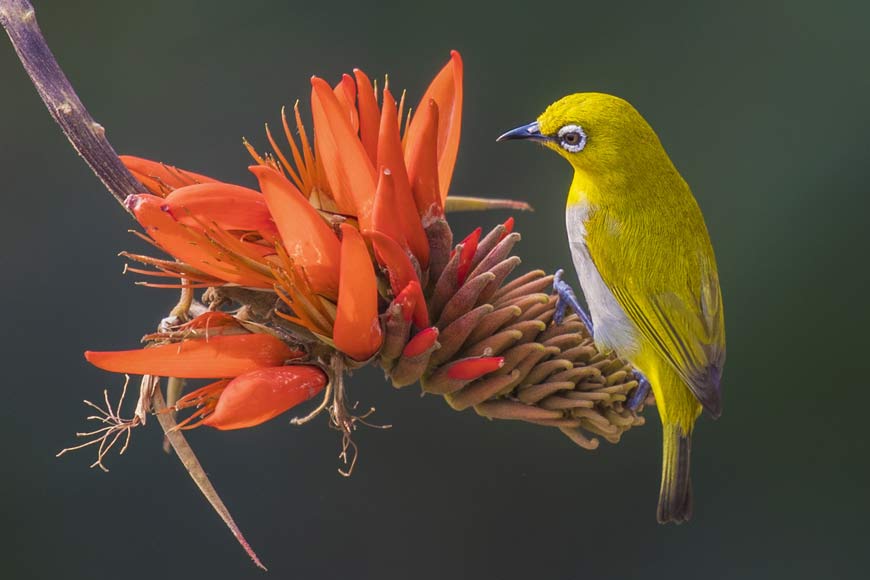
When winter arrives, the look of Bengal’s fields, countryside, and forests changes. Many villages and rural areas turn into safe shelters for birds. Although winter is still a long way off, without talking about birds, Bengal’s biodiversity feels incomplete.
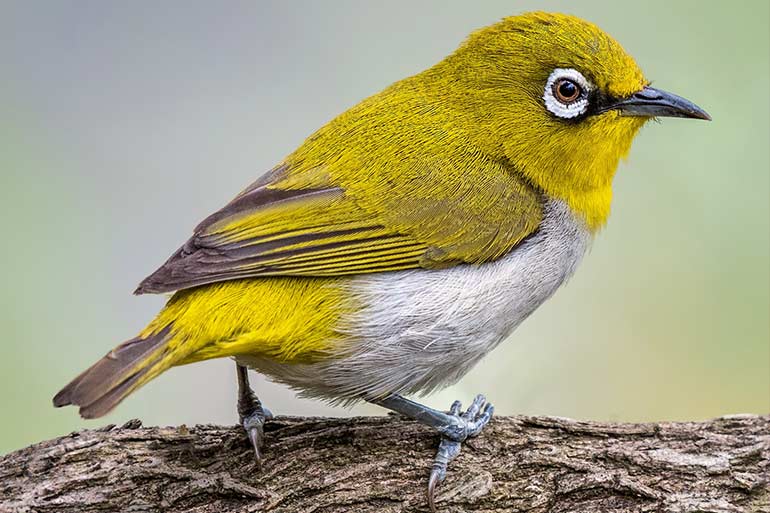
Hearing their chirping when you wake makes the morning feel peaceful, and the greenery of the trees and plants seems to pulse with life. That’s why birds have also left their mark on the pages of Bengali literature. Flocks of birds fly from one end of the land to the other, many of which go completely unnoticed. Among such unfamiliar and little-known birds is the Indian White Eye, which bird experts have fondly named Chashma Pakhi (“Spectacled Bird”) in Bengali.
The sparrow-like bird, belonging to the White-eye family, has the scientific name Zosterops Palpebrosus. Dutch zoologist Coenraad Jacob Temminck first mentioned this bird in his writings in 1824. Observing a Chashma Pakhi collected from Bengal itself, he initially named it Sylvia palpebrosa. Both names point to the same distinctive feature — the ring of white feathers encircling the bird’s eyes, which, at first glance, makes it seem as though the bird is wearing spectacles!
Its habitat includes Southeast Asia, Indonesia, and Malaysia, which is why it was originally called the Oriental White Eye. However, as its presence became more common across India over time, the name was changed to the Indian White Eye.
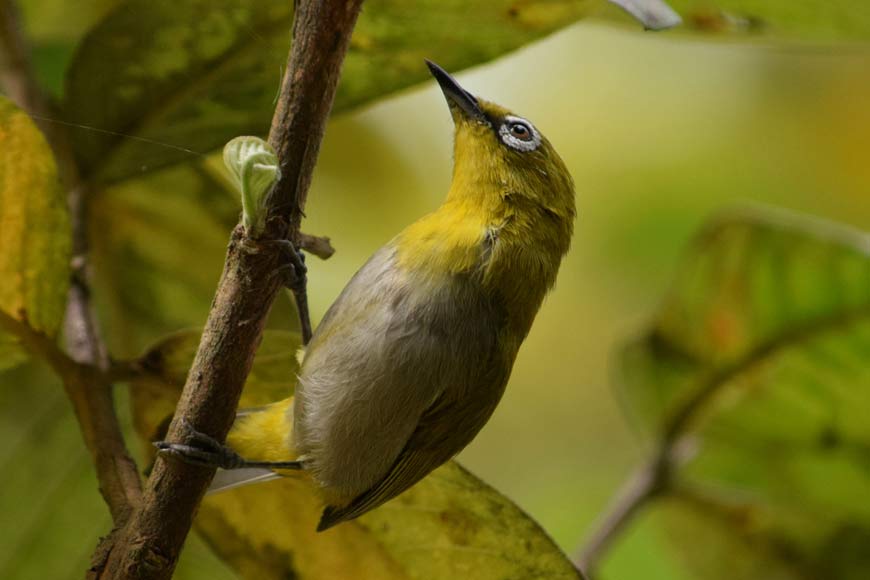
The upper body of this bird is an olive shade tinged with yellow. Its belly is a dirty white, though the exact shade varies depending on the subspecies. The distinctive “spectacles” around its eyes make this tiny bird, only about 8–9 centimeters long, particularly attractive. Scientists have already identified 11 subspecies of the Indian White Eye. Their daily diet includes various types of flower nectar, juicy, fleshy fruits, and small insects.
In the open forests of the Indian subcontinent, Indian White Eyes are found in abundance. They build their nests in shrubs and trees that thrive in humid climates, especially in mangrove forests. These birds spend most of their day gliding through the air and are rarely seen on the ground. Interestingly, like other members of the White Eye family, they are known to steal nesting materials from other bird species. Additionally, they have even been observed feeding the chicks of Paradise Flycatchers when necessary. This is a phenomenon that science refers to as “interspecific feeding.”
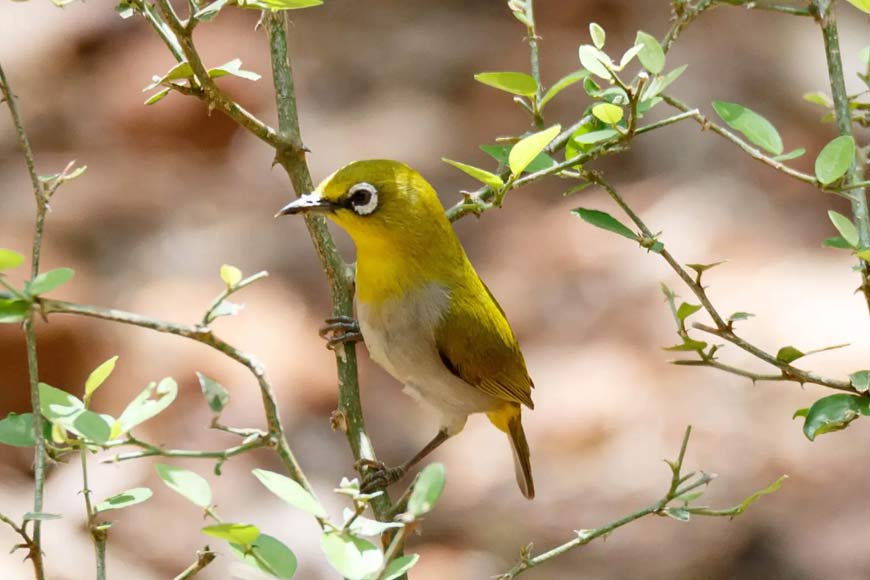
Indian White Eyes always travel from one place to another in flocks, separating from the group only during the breeding season. They mate between February and September, with April being the ideal month for reproduction. Their nests resemble small, compact bowls and are often seen swaying like a cradle between the forked branches shaped like the letter “V.” For nest building, they collect tree fibers, sticky spider webs, and even tiny fungi. It takes them only two days to construct a nest. They lay two pale blue eggs, which hatch in about ten days. Until the chicks learn to fly properly, both the male and female birds take turns carefully nurturing them.
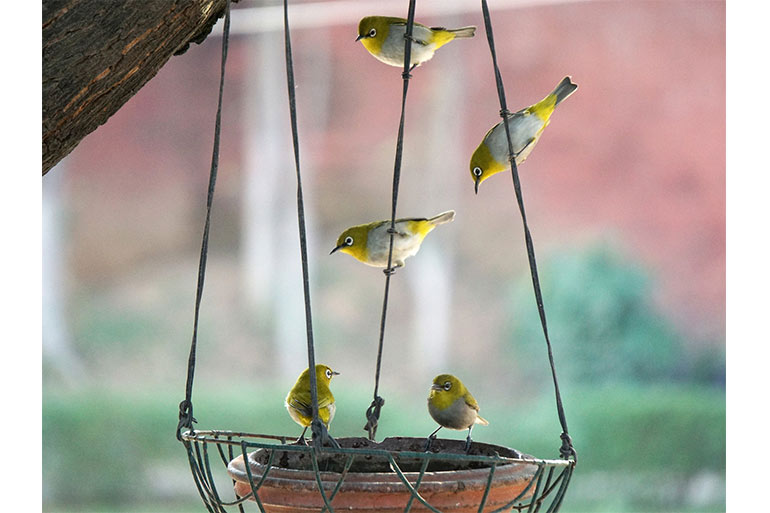
While flying, these birds make sharp calls to communicate with each other. As they move from one flower to another in search of nectar, they unknowingly help in pollination. At times, these tiny olive-colored Indian White Eyes have been seen bathing in the dew collected on flowers. They are considered a species safe from extinction worldwide, particularly in India and Bangladesh. Apart from “Chashma Pakhi,” they are also known in Bengali as “Shwetakshi” and “Babunai.”
Note: Translated by Sabana Yasmin
To read the original Bengali article, click here:











